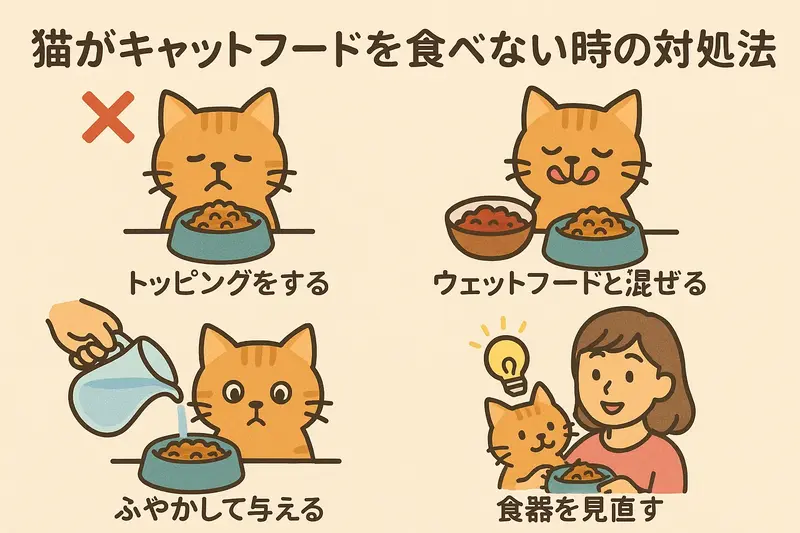It’s a common frustration among cat owners: your feline friend sniffs the bowl and walks away. No matter how expensive or "premium" the kibble is, your cat simply refuses to eat it. Why does this happen, and what can you do about it? As a pet expert, I’ll walk you through the possible causes and provide science-based strategies to encourage your cat to eat dry food again.

Cats have highly developed taste and smell. Many prefer wet food, meat, or human food, making dry kibble less appealing.
Feeding the same kibble for months can cause flavor fatigue, leading to reduced interest.
Low-quality kibble or a sudden switch in brand/formula may cause cats to reject the new food due to smell or ingredient differences.
Dental pain, digestive problems, fever, kidney/liver conditions, or parasites can reduce appetite.
Changes like moving, unfamiliar people, new pets, or even a different litter box can affect a cat’s willingness to eat.
If your cat refuses food for more than 24 hours, consult your vet to rule out underlying health conditions.
Select high-protein, grain-free, additive-free kibble that mimics a cat’s natural carnivorous diet.
Follow a 7-day transition plan:
Day 1: 10% new kibble + 90% old
Increase by 10–15% daily until 100% by Day 7
Warm the kibble slightly (not above 40°C) to enhance aroma
Mix dry food with a small amount of wet food to increase appeal
Offer food for 15–20 minutes, then remove if uneaten
Quiet, stable feeding spot
Use shallow, stainless-steel bowls
Offer gentle praise or petting after meals
Cut down on treats like canned food or human snacks that may reduce hunger or set unrealistic flavor expectations.
Healthy cats can undergo short-term fasting (8–12 hours) to naturally encourage hunger.
Rotate between two or three kibble brands (with proper transition) to prevent taste fatigue.
In multi-cat homes, cats often mimic each other’s eating behaviors.
Sprinkle kibble with freeze-dried meat powder, nutritional gel, or cat-safe broth to enhance appeal.
This can reinforce picky behavior and lead to poor dental health or nutrient imbalance.
Free-feeding lowers food freshness and the cat’s motivation to eat when served.
Human food is often salty, oily, or seasoned — harmful to cats and a leading cause of kidney or liver problems.
A cat refusing kibble isn’t a hopeless case. By identifying the root cause and applying patient, consistent strategies, most cats can learn to enjoy and benefit from dry food again.
Each mealtime is a chance to build trust and health. With expertise and love, you can guide your feline back to a balanced, nutritious diet that supports lifelong vitality.
animal tags:
We created this article in conjunction with AI technology, then made sure it was fact-checked and edited by a Animals Top editor.